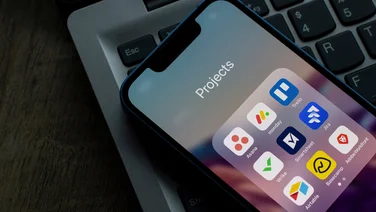To help us provide you with free impartial advice, we may earn a commission if you buy through links on our site. Learn more





Just a year after Creative Suite CS5 launched, we have Creative Suite 5.5. It’s not just a service pack, though – Adobe has moved from two-yearly product updates to yearly dot-5 releases. Not every part of Creative Suite has changed with this release, but there are some significant updates.

There are five editions of 5.5 in total. To get every single package you’ll need to buy the Master Collection, which is around £2,700 for the full version. The Production Premium version contains Adobe Premiere Pro but has no InDesign, so is really designed for video production, while Web Premium contains professional applications to help with content delivery across different platforms. For this reason we’re going to concentrate on Design Premium and Design Standard, which between them cover graphic and web design. The table here shows the differences between the editions. There are other packages such as Flash Catalyst, Bridge and Device Central, but we’ve focussed on the major elements in this review.
DESIGN STANDARD
The cheapest edition, Design Standard, is aimed at graphic designers and includes Photoshop, Illustrator, InDesign and Acrobat Pro. Photoshop, for image editing, and Illustrator, for vector-based graphic illustration, haven’t changed, but Adobe has launched a new Touch Software Development Kit. This SDK is designed to help programmers develop apps for touchscreen devices, which will then communicate with the Creative Suite applications over Wi-Fi. Examples include Eazel, Colour Lava, and Nav for the iPad. Eazel is for finger painting, Colour Lava lets you mix colours on the iPad’s screen and Nav lets you pick and choose functions from Photoshop’s toolbars to display on the iPad’s screen to make them quicker to select.

The major changes in Design Standard are to InDesign 5.5, which now has more features geared towards publishing on mobile devices. There are tools to help produce book titles in the ePub format, such as the Articles panel, which lets you determine in what order objects appear on the page – in previous versions of InDesign, this was only determined by the page layout. You can resize images dynamically depending on the width of the page, and there’s now support for adding audio and video.
EPub is still a fairly limited format, though, and best suited to eBooks. The real excitement comes from designing for tablets, which are much more flexible when it comes to typography, layouts and interactive features. Flash-based tablet apps would have been a natural fit, thanks to CS5’s extensive Flash support, but Apple’s refusal to support Adobe’s Flash and Air platforms gave Adobe a headache. The company has got around this with its Folio Producer tools. InDesign CS 5.5’s Overlay Creator lets you add content to your layouts such as slideshows, 360-degree tours, web and audio and video content. You can then export the layout as a Folio file, which can be read by Adobe’s Content Viewer app – which will be available on Android, BlackBerry and iPad.

Another big advantage is a subscription model. While you had to download each edition of early iPad magazines manually, Adobe’s Digital Publishing Platform lets users subscribe and have editions delivered to their device automatically. It’s not cheap, though – the cheapest subscription to the web-based service is $495 a month, and Adobe will also charge you platform fees depending on how many publications you want to deliver – starting at the basic package of $5,500 for 25,000 downloads. There will also be the vendor’s cut, such as 30% to Apple to be hosted in the App Store. Print publishing isn’t cheap either, so despite the charges we’re sure many publishers will jump at the chance to have an effective distribution model for their electronic magazines.
DESIGN PREMIUM
The chief additions to Design Premium are Dreamweaver, Flash and Fireworks. Fireworks, the graphical, non-HTML web design tool, is unchanged, but Dreamweaver and Flash are updated. Dreamweaver CS5 was criticised for not including HTML5 support, but CS5.5 lets you code in HTML5 and its preview section supports HTML5’s video and canvas tags – which lets you draw vector graphics using JavaScript. CSS3 support is also now included in Dreamweaver’s CSS Styles panel.
Strong JavaScript support is essential if you’re going to be working with HTML5, and Dreamweaver CS5.5 fully integrates the industry-standard jQuery framework. You can use jQuery objects such as layout grids and collapsible blocks, and there are jQuery starter layouts included to help you get started on mobile projects. There’s also support for PhoneGap – the open-source mobile development framework. This lets developers build apps in languages they know such as HTML, JavaScript and CSS, rather than less well-known languages such as Objective-C, then use PhoneGap to build it for different mobile platforms. Having PhoneGap built in to CS5.5 means developers can build browser-based iOS and Android apps within Dreamweaver. You can also use CSS to alter your layout and design based on the mobile device’s screen size – such as changing the number of columns and font size. Dreamweaver’s Multiscreen dialog box lets you see quickly how the project will look on devices with different sized screens.

Finally, there are the changes to Flash Professional, which are also all about mobile devices. Adobe has tried to make it easier to produce content for different screen sizes. You have the option to scale all content automatically when you resize a project’s canvas, and a number of easy to apply code snippets let you add support for accelerometers and multitouch displays. To cut down on processor overheads, and so improve battery life, you can choose to convert vector graphics to bitmaps. Of course, Apple devices don’t support Flash, but now Apple has lifted the ban on coding apps in non-native languages using third-party development tools, it’s possible to export apps to iOS.
TO CONCLUDE
If you’re already a CS5 user, there’s little reason to upgrade to CS5.5. Photoshop and Illustrator haven’t changed, and the majority of changes to InDesign, Dreamweaver and Flash are geared towards mobile publishing. Nonetheless, HTML5 integration is welcome, and if you’re a budding app developer you’ll appreciate the new mobile-orientated tools. There are also some great upgrade deals available if you have a previous version, and the Student Edition is a bargain – check out Adobe’s Education Store to see if you’re eligible.
| Details | |
|---|---|
| Price | £999 |
| Details | www.adobe.com |
| Rating | **** |





